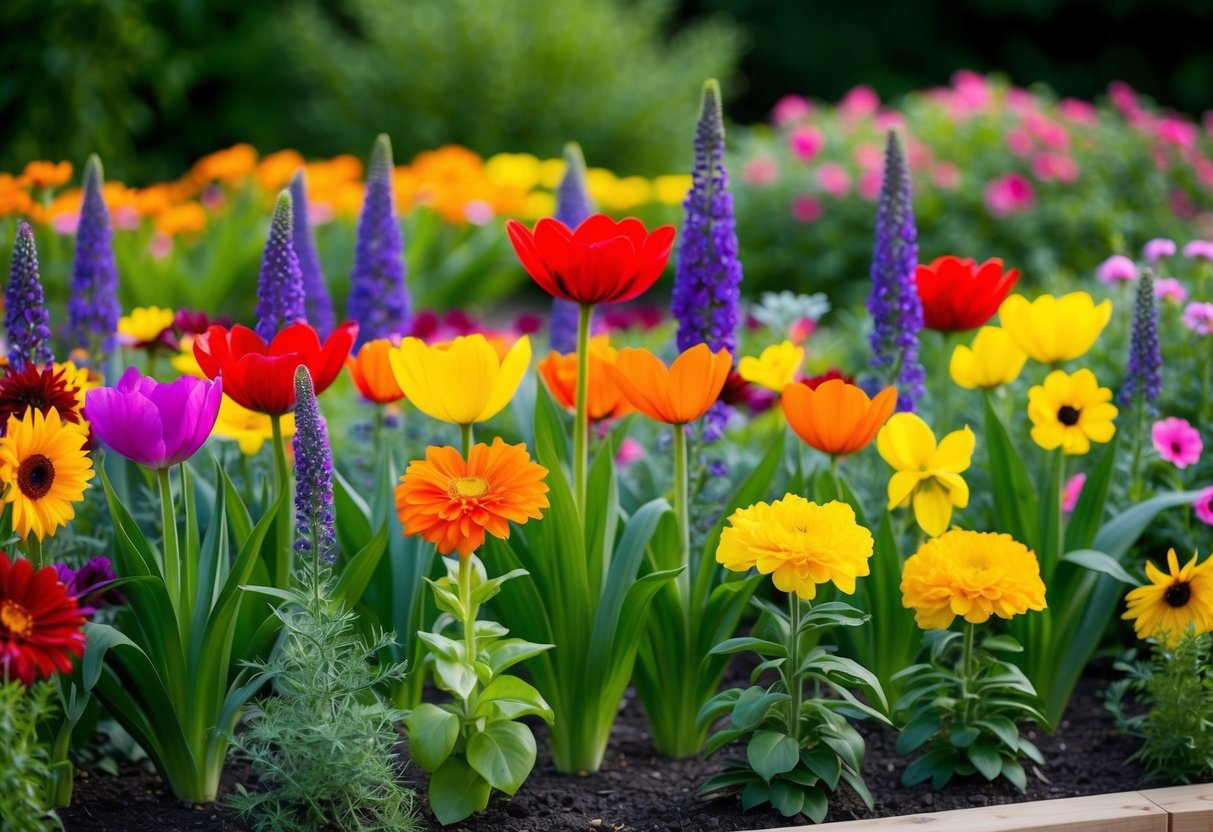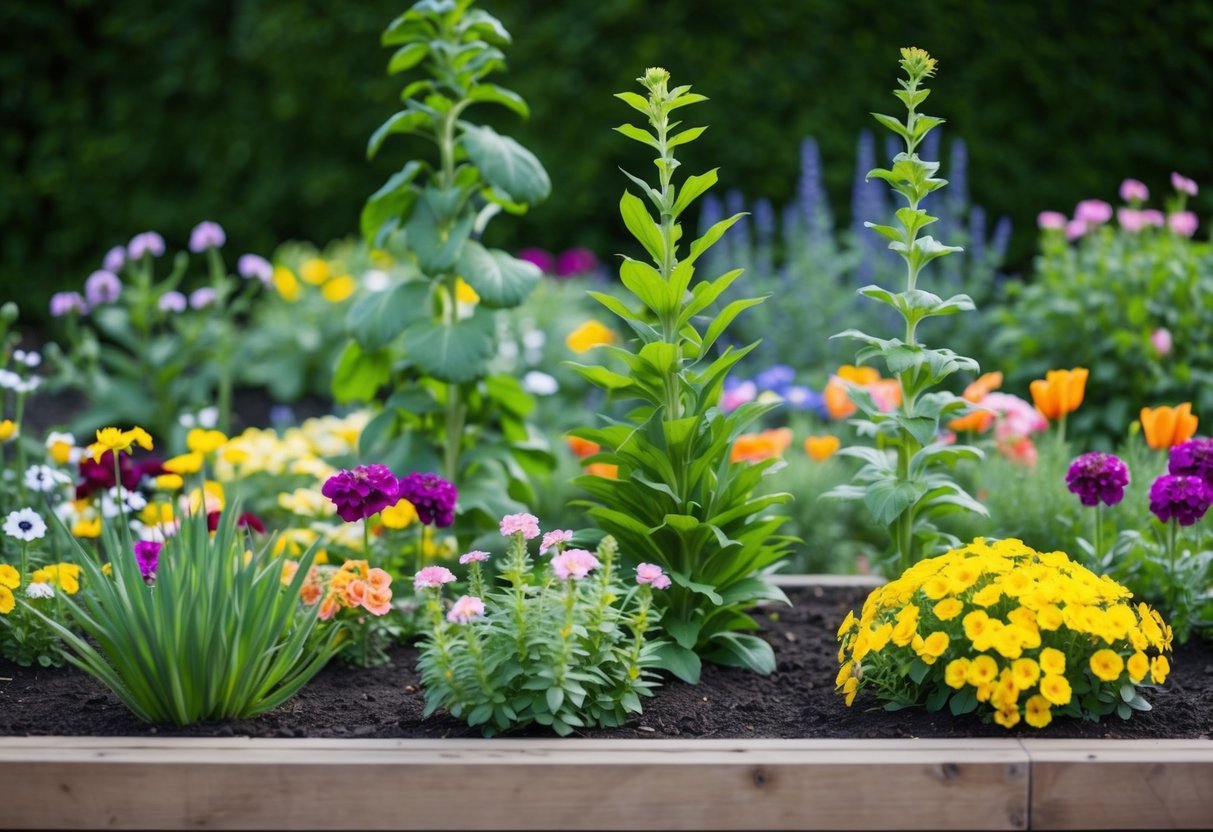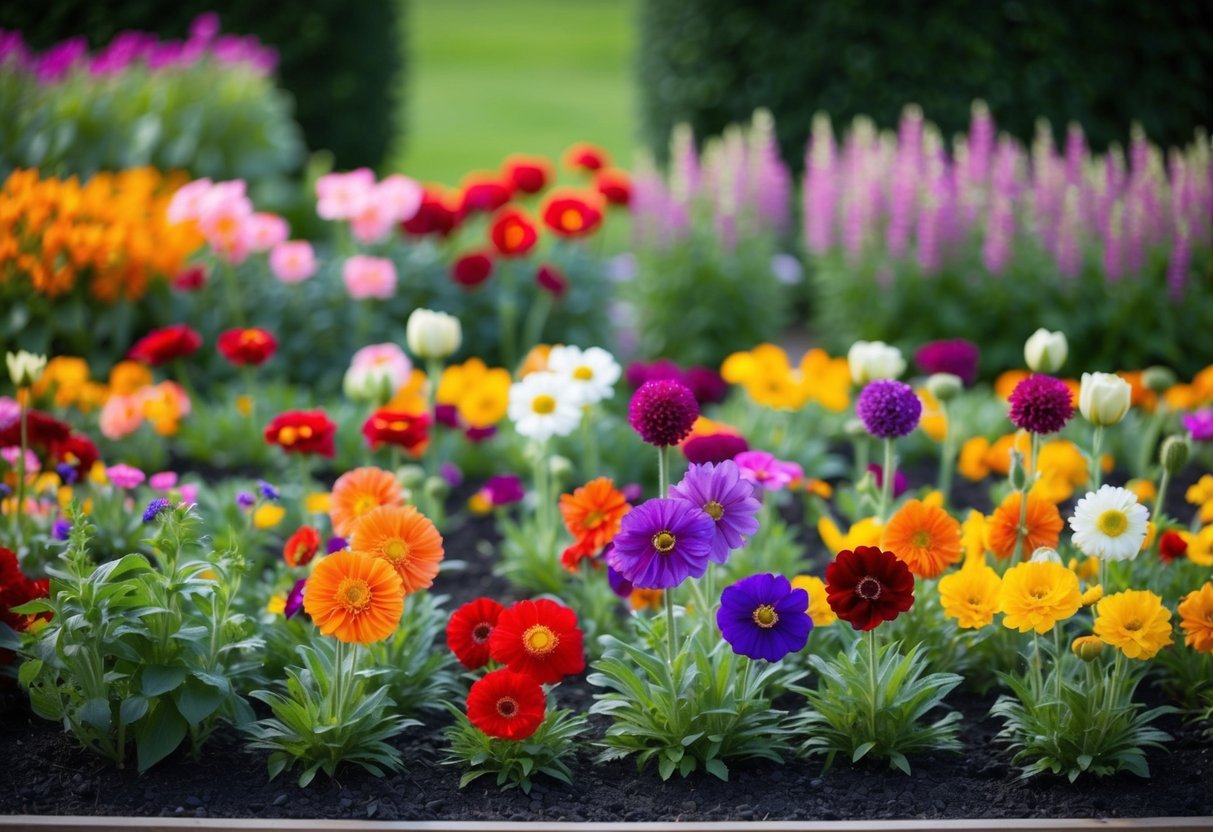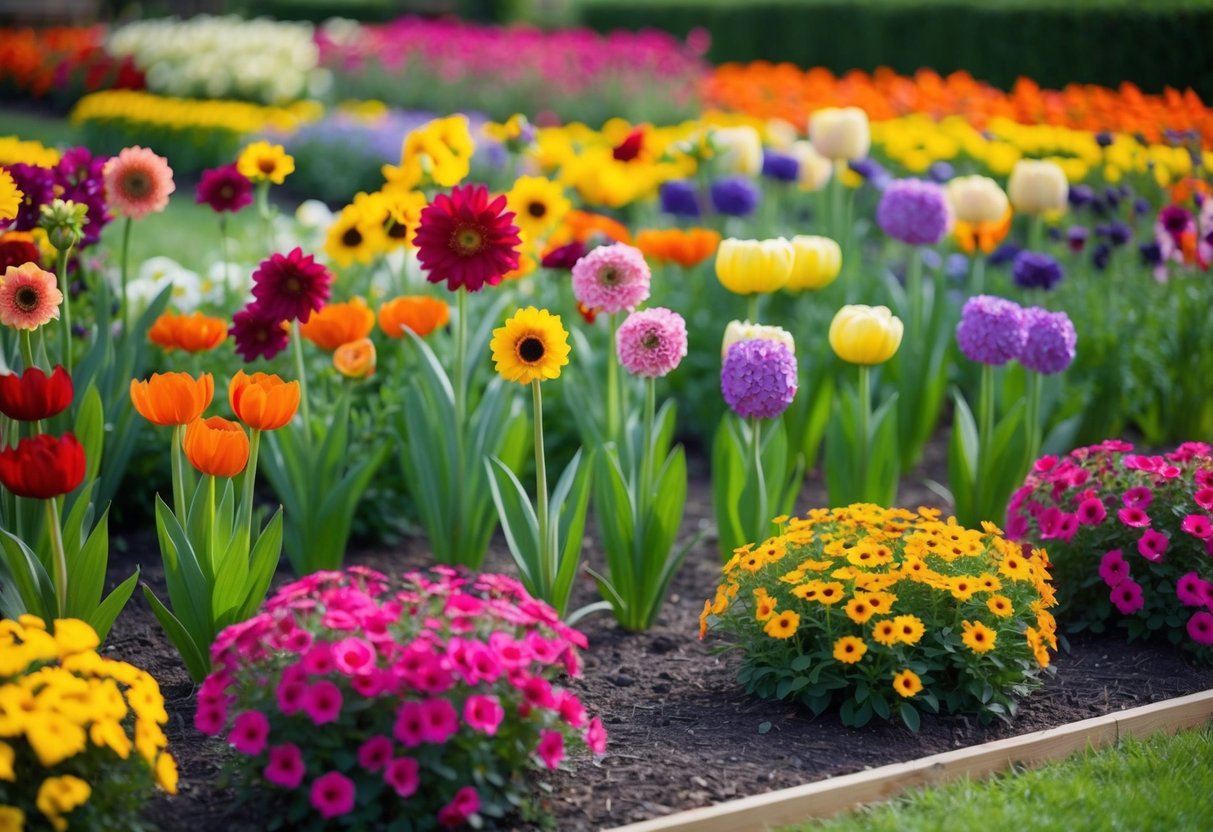How Do You Arrange Flowers in a Garden Bed? Tips for a Beautiful Bloom
Creating a beautiful garden bed can be an enjoyable and rewarding experience. When arranging flowers, consider both the layout and the types of plants you choose. Taller plants often work best at the back or center of the flower bed, while smaller ground cover plants fit nicely at the front. This arrangement creates depth and ensures that every plant can be seen.

When designing your garden bed, think about how the flower bed will look from different angles. Grouping similar plants can make a strong visual impact, enhancing the unity of your garden. You might want to include a variety of sun-loving and shade-tolerant plants to maximize the bloom potential throughout the growing season. For some helpful ideas, you can explore suggestions from various sources like BBC Gardeners’ World Magazine.
Choosing the right plants is crucial for a stunning flower bed. Select flowers that will thrive in your climate, considering perennials for returning blooms and annuals for a splash of color. If you’re looking for advice on plant selection by different climate zones, the tips provided by Davey Tree can be a great starting point. With careful planning and plant selection, your flower bed can become a charming and vibrant focal point in your garden.
Planning Your Garden Layout

When planning your garden layout, you need to think about sunlight exposure, soil quality, plant size, placement, and color schemes. These factors help ensure your garden bed is healthy and visually appealing.
Evaluating Sunlight Exposure and Soil Quality
Start by observing how much sunlight your garden bed receives throughout the day. Some plants thrive in full sun, while others prefer partial shade. Once you understand the sunlight exposure, you can select appropriate plants.
Conduct a soil test to determine its pH level and nutrient content. This test guides you on whether you need to enrich the soil. Adding compost or specific nutrients can make your garden healthier and more vibrant. Knowing the soil quality ensures your plants thrive, as different plants have specific soil requirements.
Determining Plant Size and Placement
Before planting, consider the mature plant sizes and plant height. Taller plants are usually placed at the back or center of a garden bed, while smaller ones are placed in front. This arrangement allows all your plants to be visible.
Creating groups of similar plants can provide a unified look and make an impressive visual impact. Remember to give each plant enough space to grow. Proper spacing helps avoid overcrowding, which can lead to diseases.
Choosing a Color Scheme
Selecting a color scheme helps create a cohesive and attractive garden. Start by choosing a color palette using a color wheel. You might opt for complementary colors that lie opposite each other on the wheel, such as purple and yellow, or analogous colors which are next to each other, like blue and green.
Mixing different hues and shades adds depth and interest. Your choices can reflect your personal taste or the mood you want your garden to convey. Whether you prefer bold, bright colors or soft, muted tones, thoughtful color selection enhances the visual appeal of your garden beds.
With this approach, your garden can be a beautiful and well-organized space that you can enjoy throughout the seasons.
Selecting Plants for Your Garden

When planning your garden, it’s important to choose the right plants that will thrive in your planting bed. Combining a mix of annuals, perennials, and flowering shrubs can create a vibrant and varied landscape. Consider bloom times and how each plant’s unique qualities can highlight different areas of your garden.
Incorporating Annuals and Perennials
Annuals bring bright colors and fill gaps in your flower garden. With their short life cycle, they bloom quickly and offer seasonal flair. Consider bedding plants like marigolds or petunias for instant impact.
Perennials, like asters and coneflowers, return each year, establishing a consistent backdrop. They require less maintenance over time. Choose a mix to enjoy prolonged blooming periods. When selecting, consider the color scheme and the heights of the plants, ensuring taller perennials don’t overshadow shorter annuals.
Creating Focal Points with Flowering Shrubs
Flowering shrubs, such as azaleas, create eye-catching focal points. They offer structure and depth to your garden bed. These shrubs can vary in size; consider the available space and how much room they’ll need to grow.
Use them to anchor the ends or corners of your garden. Pay attention to bloom times; selecting plants with staggered blooming can maintain visual interest throughout the seasons. Place these strategically to guide the viewer’s eye or complement nearby plants.
Enhancing Garden Aesthetics

Creating a beautiful garden involves careful planning and consideration of how different elements interact. By focusing on layering plants for texture and using color theory, you can transform your garden into an inviting and visually appealing space.
Layering Plants for Texture and Depth
Layering is important for creating texture and depth in your garden bed. Start by arranging tall plants, like shrubs, in the back. This creates a backdrop for the rest of the plants. Medium-height perennials can be placed in the middle to add layers without blocking the view of the back row.
In the front, use low-growing plants. This mix can include annuals or small perennials that add bursts of color and bring attention to your garden. Be mindful of spacing, as overcrowding can harm plant health.
Consider texture when choosing plants. Mix different leaf shapes and sizes, like feathery ferns with broad foliage, to add interest. This variety will create a vibrant and full appearance. Key Tip: Grouping plants of the same species together can enhance visual impact.
Using Color Theory to Enhance Visual Appeal
Color choice plays a vital role in your garden’s overall look. Using color theory can help you select plant combinations that enhance visual appeal. Consider complementary colors, such as yellow and purple. These create contrast and make each hue stand out more.
Repetition of colors is another effective technique. Repeating specific colors throughout your garden can create a sense of unity and rhythm. For a calm and cohesive look, stick to a specific color palette.
Don’t forget about seasonal changes. Choose plants that bloom at different times to ensure your garden remains colorful all year round. Pro Tip: Use foliage color, like silver or burgundy leaves, to add even more depth.
Attracting Wildlife to Your Garden

To attract wildlife, choose plants that offer food and shelter to various species. Butterflies and beneficial insects are particularly important, helping pollinate your garden and control pests.
Choosing Plants That Attract Butterflies
Butterflies are attracted to gardens with colorful, nectar-rich plants. Native plants are often the best choice because they thrive in local conditions and are familiar to local butterfly species. Flowers like coneflowers and pansies provide ample nectar and beauty to your garden. These plants also offer various colors that are attractive to butterflies.
When planning, consider planting clumps of each type of plant. This helps butterflies find them more easily. Flowering shrubs like butterfly bushes are ideal as they provide extended bloom periods and shelter. Remember to include a water source, like a shallow dish with stones, to offer butterflies a place to drink.
Creating Habitats for Beneficial Insects
Insects like ladybugs and bees are essential for a healthy garden. Native plants again play a crucial role here, as they support local insect populations. Introducing plants like hostas can create ideal habitats due to their large, inviting leaves.
Beneficial insects need diverse environments, so aim for a mix of plant types. This includes layering your garden with ground covers, flowering plants, and small shrubs. Use mulch to create safe, moist environments for these insects to thrive. Adding a small pile of rocks or logs can also provide excellent shelter and breeding grounds.
Maintaining Your Garden Bed

Caring for your garden bed involves using mulch and organic matter to enrich the soil. Seasonal attention like pruning is also essential for vibrant flowers and plants.
Applying Mulch and Organic Matter
Adding mulch to your garden bed is a great way to conserve moisture and reduce weeds. Use materials like wood chips, straw, or shredded leaves. This will help maintain a consistent soil temperature.
Incorporating organic matter such as compost improves soil structure. It enriches the soil with nutrients that your plants need to thrive.
When spreading mulch, keep it around 2-3 inches deep. Avoid piling it against plant stems to prevent rot. Regularly check the thickness as it breaks down over time. Mulch around chrysanthemums to support their growth and bloom.
Seasonal Care and Pruning Techniques
Pruning helps your garden look tidy and boosts plant health. In the spring, remove dead or damaged branches from your plants. Chrysanthemums benefit from being trimmed in early summer to encourage fuller blooms.
Regularly check flowering plants and snip off the spent blossoms. Doing this can help encourage more blooms throughout the season.
During fall, clean off any fallen leaves or debris around the garden beds. This helps prevent pests and diseases from overwintering. Consider adding a fresh layer of mulch before winter sets in to protect plant roots.
By sticking to these practices, you keep your garden bed looking its best all year long.







